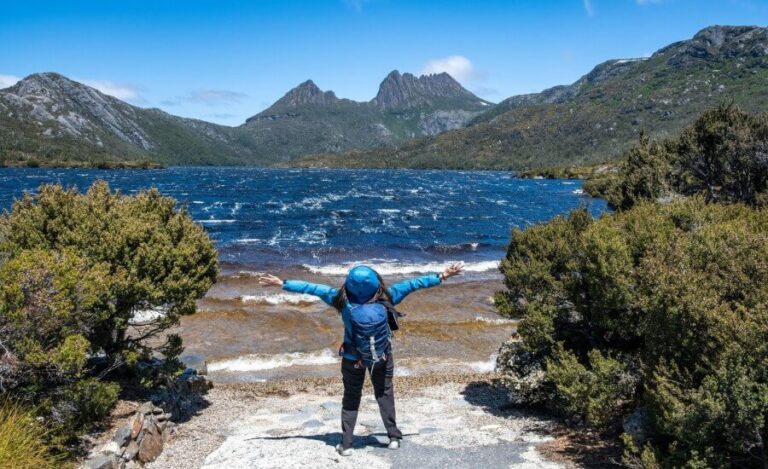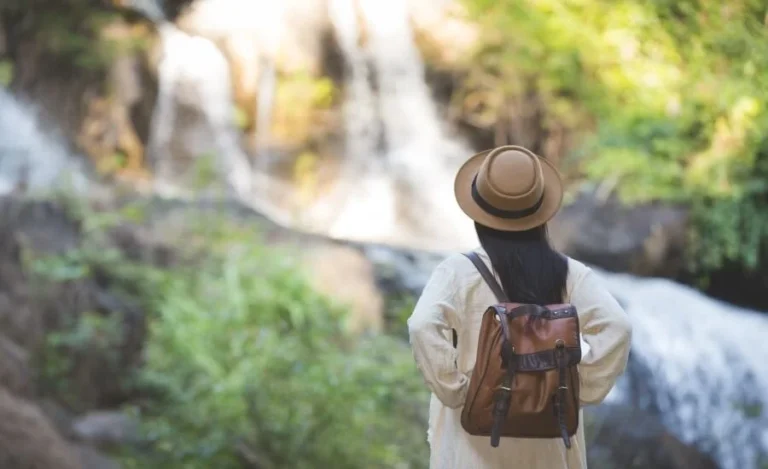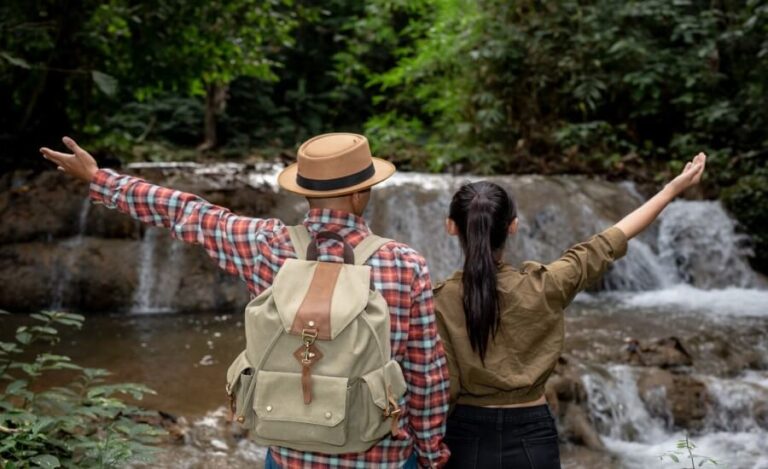
Remember that whirlwind trip? The one where you saw five cities in seven days, snapped selfies at countless landmarks, and returned home utterly exhausted, needing a vacation from your vacation? In our fast-paced world, travel itself has often become another item to consume quickly, a checklist of ‘must-sees’ to tick off before rushing to the next destination. We collect passport stamps and iconic photos, but do we truly experience the places we visit? Do we connect with the culture, the people, the unique rhythm of a place, or does it all become a blur of transit and fleeting impressions?
There’s a growing movement offering a powerful antidote to this frantic pace, a philosophy that invites us to savor the experience rather than just consume the sights. It’s called the Slow Travel Revolution: Embrace the Journey, Not Just the Destination. This isn’t about physically moving at a snail’s pace necessarily, but about adopting a mindset of connection, mindfulness, sustainability, and depth over breadth. This guide delves into the heart of the slow travel movement, exploring why it matters, its profound benefits, and how you can consciously choose to slow down, unplug the relentless itinerary, and rediscover the art of meaningful travel.
What is a Slow Travel?
Slow travel is a mindful approach to travel that emphasizes connection with local people, cultures, food, and nature over checking off tourist attractions quickly. Instead of rushing through multiple destinations in a short time, slow travel encourages you to stay longer in one place, immerse yourself in the rhythm of daily life, and engage deeply with your surroundings.
Key principles of slow travel include:
- Choosing quality experiences over quantity
- Using sustainable modes of transportation (like trains or bikes)
- Supporting local businesses and staying in locally-owned accommodations
- Reducing environmental impact
- Traveling with intention and presence
It’s about experiencing a place, not just visiting it taking time to enjoy a morning coffee at a local café, learning traditional crafts, or simply walking through quiet neighborhoods. Ultimately, slow travel offers richer memories, lower stress, and a more authentic connection with the nature and world.
The Tyranny of the Tick-list: What’s Wrong with Fast Travel?
The conventional model of tourism often pushes us towards maximizing quantity over quality. Short vacation times combined with a desire to ‘see it all’ lead to packed itineraries, constant movement, and often, a focus on superficial encounters with heavily touristed sites. This ‘fast travel’ approach, while sometimes necessary or appealing for certain goals, comes with significant drawbacks.
Firstly, it can be incredibly stressful and exhausting. Rushing between airports, train stations, hotels, and attractions leaves little room for relaxation or spontaneous discovery. The pressure to stick to a tight schedule can induce anxiety, turning a potential escape into another source of pressure. We return home feeling like we’ve done a lot, but perhaps not feeling truly rested or enriched.
Secondly, it often hinders deep cultural immersion. When time is limited, interactions tend to be transactional. We might eat at tourist-centric restaurants, take guided tours that offer curated narratives, and interact primarily with other Travellers or those serving the tourist industry. Meaningful connections with local people and genuine insights into their daily lives and perspectives are harder to cultivate when you’re just passing through quickly.
Thirdly, fast travel frequently has a larger environmental footprint. More flights, more short-stay accommodations requiring frequent cleaning, and often higher consumption patterns contribute more significantly to carbon emissions and resource depletion compared to staying longer in one place and using slower transport. It can also exacerbate problems of overtourism in popular hotspots, straining local infrastructure and diminishing the quality of experience for everyone.
Finally, it can lead to a feeling of superficiality. We might collect photos of places without truly feeling them. The focus on landmarks can overshadow the subtle beauty of everyday life, the unique atmosphere of a quiet neighborhood, or the simple pleasure of lingering in a local cafe. Did you really experience Paris, or did you just see the Eiffel Tower?
Defining the Slow Travel Revolution: More Than Just Pace

The Slow Travel Revolution, inspired by the Slow Food movement originating in Italy, is fundamentally a shift in mindset. It’s a conscious choice to travel in a way that values connection, sustainability, community, and personal enrichment over simply covering ground or checking boxes. It’s about quality of experience, not quantity of destinations.
Core principles include:
- Connection: Fostering genuine connections – with the local culture, the environment, the people you meet, and yourself. It prioritizes depth of understanding over breadth of sightseeing.
- Mindfulness & Presence: Encouraging Travellers to be fully present in the moment, savoring experiences, engaging their senses, and appreciating the journey itself, not just the end point.
- Sustainability: Promoting environmentally conscious choices (slower transport like trains or boats, reducing waste, conserving resources) and supporting local economies directly (staying in local guesthouses, eating at local restaurants, buying from local artisans).
- Immersion: Spending longer periods in fewer places, allowing time to understand the local rhythm, explore beyond the tourist trail, learn basic language phrases, and experience daily life.
- Flexibility & Serendipity: Leaving room in itineraries for spontaneous discoveries, unexpected encounters, and simply relaxing or observing without a fixed agenda. It embraces the ‘Joy of Missing Out’ (JOMO) on some things to fully experience others.
Slow travel isn’t about adhering to rigid rules about duration or speed; it’s about infusing your travels with intention, awareness, and respect. It’s about asking “How can I connect more deeply?” rather than “How much can I see?”
The Unfolding Path: Benefits of Embracing the Slow Travel

Choosing to slow down your travel pace unlocks a wealth of benefits that enrich the experience and contribute to greater well-being, both for the traveler and the destination.
Key Benefits:
- Deeper Cultural Immersion: Staying longer allows you to move beyond tourist bubbles, observe daily life, interact more meaningfully with locals, understand nuances, and gain authentic insights into the culture.
- Reduced Stress & Burnout: A relaxed pace eliminates the frantic rush of trying to see everything. It allows for rest, spontaneity, and genuine relaxation, leading to a more restorative vacation. You return feeling refreshed, not exhausted.
- More Meaningful Connections: Slowing down creates opportunities for genuine conversations with locals, fellow Travellers met along the way, and deeper bonding with travel companions.
- Enhanced Sustainability: Typically involves fewer flights, greater use of public/ground transport, supporting local businesses directly (reducing economic leakage), and encourages more mindful consumption, thus lowering environmental and social impact.
- Greater Affordability (Often): Longer stays often mean access to cheaper weekly/monthly accommodation rates (apartments, homestays). Cooking some meals, using local transport, and avoiding tourist traps saves money.
- Increased Serendipity & Adventure: Less rigid planning leaves space for unexpected discoveries stumbling upon a local festival, following an intriguing side street, accepting a spontaneous invitation. These often become the most cherished memories.
- Personal Growth & Reflection: A slower pace allows time for introspection, journaling, learning new skills (like cooking or language), and gaining new perspectives on life and the world.
- More Memorable Experiences: Deep immersion and emotional connection create stronger, more vivid memories compared to fleeting glances at multiple landmarks.
Unplugging the Itinerary: Finding Freedom in Slow Pace

A key enabler of slow travel is consciously disconnecting from the pressure of constant digital planning, optimization, and real-time sharing. While technology can be a useful tool, over-reliance on apps for navigation, reviews, bookings, and social updates can keep us locked in a fast-paced, externally validated mode, hindering true immersion.
Less Planning, More Presence: Slow travel encourages looser itineraries. Instead of mapping every minute, perhaps plan only one key activity per day, or simply define a neighborhood to explore. This leaves space for spontaneity. Resist the urge to constantly check ‘what to do next’ apps. Look around, ask a local, follow your curiosity.
Analog Navigation for Orientation: Use physical maps for general orientation and understanding the layout of a place, but allow yourself to wander without constantly tracking a blue dot. Getting slightly ‘lost’ in a safe area can lead to wonderful discoveries.
Trust Local Knowledge over Online Reviews: Instead of scrolling endlessly through restaurant reviews, ask your guesthouse owner, a shopkeeper, or someone at the park for a recommendation. Observe where locals are eating. This fosters interaction and often leads to more authentic culinary experiences.
Mindful Tech Use: If using your phone, do so intentionally. Put it away during meals, conversations, and while actively exploring or observing. Limit social media updates – experience the moment fully first, share thoughtfully later. onsider designated ‘tech-free’ periods each day.
Embrace Disconnection: In areas with limited connectivity, see it as a feature. Enjoy the mental quietude, the heightened sensory awareness, and the encouragement towards real-world interaction that comes with being offline.
Disconnecting from the digital itinerary allows you to connect more deeply with the physical and social environment around you, fostering the very presence and serendipity that define slow travel.
Mindful Miles: Practices for the Conscious Slow Traveller

Slow travel is inherently mindful, but cultivating specific practices can deepen the experience further. It’s about bringing conscious awareness to the journey.
- Practice Sensory Awareness: Regularly check in with your senses. What are you seeing, hearing, smelling, tasting, feeling right now? Whether walking down a street, sitting in a park, or riding a bus, consciously tune into the sensory details of the moment.
- Lingering & Loitering (Mindfully): Give yourself permission to linger. Spend extra time in a cafe just watching people, sit on a park bench observing daily life, browse a market stall without pressure to buy, revisit a place you enjoyed. Resist the urge to always be ‘doing’ something.
- Engage Locally (Respectfully): Learn basic greetings and phrases. Smile. Make eye contact (where culturally appropriate). Shop at local markets, eat at family-run eateries, attend local events if possible. Ask open-ended questions when appropriate.
- Journaling & Reflection: Dedicate time to write or sketch about your experiences, observations, and feelings. This helps process the journey, deepen insights, and create lasting memories beyond photos.
- Mindful Eating: Pay full attention when eating local cuisine. Notice the colours, textures, smells, and flavours. Eat slowly, savoring the experience.
- Walking Meditation: Explore neighborhoods on foot without a specific destination. Pay attention to the sensation of walking, your breath, and the sights and sounds around you as you meander.
- Practice Gratitude: Regularly take moments to appreciate the opportunity to travel, the beauty around you, the kindness of strangers, the simple pleasures encountered along the way.
Slow Travel Revolution: Embrace the Journey, Not Just the Destination

A core tenet of the Slow Travel Revolution is shifting focus from solely reaching destinations to appreciating the entire process of travel itself. The moments between places – the train rides, bus journeys, walks, even waiting times – become part of the experience, not just transitions to be endured or optimized away.
Mindful Transit: Instead of using travel time to catch up on emails or zone out with entertainment, try being present. Look out the window of the train or bus, noticing the changing landscapes and towns passing by. Observe fellow passengers (respectfully). Read a book related to your destination. Use the time for quiet reflection or journaling. See transit as an opportunity for observation and decompression.
Embrace Imperfection & Delays: Slow travel accepts that things might not always go according to plan. Delays happen, detours arise. Instead of getting frustrated, practice acceptance and see it as part of the adventure. What can you observe or experience during this unexpected pause?
Find Joy in the In-Between: Appreciate the simple moments waiting for a ferry while watching the harbour activity, stopping for coffee in a small roadside town, the rhythm of walking between villages. These interstitial moments often hold quiet beauty and opportunities for authentic observation that are missed when rushing.
By valuing the journey, you transform travel from a series of points on a map into a continuous, unfolding experience, rich with learning and presence from start to finish.
Common Concerns & Solutions for Aspiring Slow Travellers

Adopting a slower travel style can feel counterintuitive or raise practical concerns. Here’s how to address them:
Concern 1: Fear of Missing Out (FOMO) – “I won’t see everything!”
- Solution: Reframe your goal from ‘seeing everything’ to ‘experiencing deeply’. Acknowledge that you can’t see everything, no matter your pace. Prioritize what truly interests you, not just the famous landmarks. Embrace JOMO – the Joy of Missing Out – knowing that by slowing down, you’re gaining richer experiences in the places you do explore. Quality over quantity!
Concern 2: “I only have limited vacation time.”
- Solution: Slow travel principles apply even to short trips! Choose one city or region instead of trying to cram in several. Explore that one place more deeply. Opt for destinations closer to home to minimize transit time. Even dedicating one day of a short trip to unplanned wandering can inject slow travel principles. It’s about mindset, not just duration.
Concern 3: “Isn’t slow travel more expensive (longer accommodation stays)?”
- Solution: Not necessarily. While the total trip cost might be higher due to duration, the per-day cost is often lower. Longer stays frequently unlock discounted weekly/monthly rates for accommodation (apartments, rentals). Self-catering becomes easier, saving on restaurant meals. Using slower, cheaper transport (buses, trains vs. flights) also cuts costs.
Concern 4: “I might get bored staying in one place for too long.”
- Solution: Boredom can be a gateway to deeper observation and creativity! But slow travel doesn’t mean doing nothing. It means engaging differently – taking a local cooking class, learning a craft, volunteering briefly (ethically!), exploring different neighborhoods thoroughly, revisiting favorite spots, reading local literature, or simply enjoying relaxing without pressure. Find activities that allow for immersion.
Before You Go Checklist: Planning for Slow Travel

Planning for slow travel is less about rigid schedules and more about setting a mindful intention and framework:
- Define Your ‘Why’: What do you hope to gain from this trip (relaxation, cultural immersion, learning, connection)? Let this guide your choices.
- Choose Fewer Locations: Select one or two primary bases instead of many destinations. Consider travel time between them.
- Research Deeply, Plan Loosely: Learn about the history, culture, and context of your chosen location(s). Identify key interests but avoid scheduling every hour. Leave large blocks of time unscheduled.
- Book Initial Accommodation: Secure your first stay, potentially opting for longer-term rentals (apartments, homestays) for better immersion and value.
- Consider Slower Transport: Opt for trains, buses, ferries, or even cycling/walking where feasible and enjoyable for the journey between places.
- Pack Mindfully: Bring items that support slow activities (journal, book, sketchpad, comfortable walking shoes). Pack layers for flexibility. Try to pack relatively light for ease of movement if changing bases occasionally.
- Learn Basic Language: Even a few key phrases enhance interaction and show respect.
- Set Tech Boundaries: Decide on your approach to phone/internet use beforehand. Download offline maps/info as needed but plan to rely less on constant connectivity.
- Budget Flexibly: Estimate costs but allow for spontaneous local discoveries or longer stays if desired. Factor in potential savings from self-catering/local transport.
- Cultivate Openness: Pack curiosity, patience, flexibility, and a willingness to embrace the unexpected. Let go of the need to control every moment.
Rediscover the Art of Meaningful Travel

In a world obsessed with speed, efficiency, and instant gratification, the Slow Travel Revolution offers a gentle yet profound alternative. It calls us back to a more human pace, inviting us to embrace the journey, not just the destination. By consciously choosing depth over breadth, connection over consumption, and presence over productivity, we unlock richer, more memorable, and more sustainable ways of exploring our world and ourselves. It’s about understanding that the true value of travel often lies not in the number of sights seen, but in the quality of moments lived and connections made.
You’ve journeyed through the philosophy of slow travel, contrasted it with the pitfalls of hurried tourism, discovered its myriad benefits, and learned practical ways to unplug your itinerary and cultivate mindful presence along the way. You’re equipped to address common concerns and plan your own unhurried adventures. Slow travel isn’t just a style; it’s a mindset, applicable whether you have two weeks or two months, reminding us that meaning is found in immersion, not just mileage.
Are you ready to step off the treadmill of fast tourism and rediscover the joy of truly experiencing a place? On your next trip, dare to slow down. Choose one less city, leave one day unplanned, linger longer over coffee, put the phone away, and simply be where you are. Engage your senses, follow your curiosity, connect with intention. Join the Slow Travel Revolution and rediscover the art of meaningful travel – one mindful moment, one unhurried step at a time.






